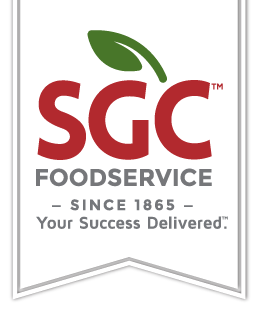In today's digital age, the visual appeal of food plays a crucial role in enticing customers and creating a memorable dining experience. With the rise of social media and food blogging, the demand for visually stunning food photos has grown exponentially. In response to this trend, the food industry has begun leveraging the power of artificial intelligence (AI) in photography to capture culinary delights in new and innovative ways. In this blog post, we will explore how AI photography is revolutionizing the food industry, from automated photo editing to personalized recommendations, and discuss the benefits and challenges of this emerging technology.
Automated Photo Editing:
One of the ways AI is transforming food photography is through automated photo editing. AI algorithms can analyze food images and automatically adjust factors such as exposure, contrast, color balance, and sharpness to enhance the overall quality of the image. This can result in stunning food photos that are visually appealing and appetizing to viewers. Automated photo editing can save time for food photographers, allowing them to quickly edit and enhance multiple images without sacrificing quality. It also ensures consistency in image editing, which is important for maintaining a cohesive visual brand identity for restaurants and food-related businesses.
Image Recognition and Tagging:
AI can also be used in food photography for image recognition and tagging. AI algorithms can automatically recognize and tag objects, scenes, or ingredients in food images, making it easier to search and organize large collections of food photos. This can be particularly helpful for restaurants and food businesses that need to manage and categorize many food images for their menus, websites, and marketing materials. With AI-powered image recognition and tagging, finding and using the right food images becomes faster and more efficient, saving time and effort for food photographers and marketers alike.
Image Generation:
Another exciting application of AI in food photography is image generation. AI algorithms can generate food images based on input parameters, such as style, content, or artistic preferences. For example, a restaurant could use AI-generated images to showcase potential new dishes or create visually stunning social media content. AI-generated food images can also be used in food-related advertising, packaging, and other marketing materials to create eye-catching visuals that stand out from the competition.
Image Analysis:
AI-powered image analysis is another area where food photography is benefiting from AI technology. AI algorithms can analyze and interpret visual data from food images, such as ingredient recognition, portion size estimation, or food quality assessment. This can have various applications in the food industry, from automating food inventory management to monitoring food safety and quality in restaurant kitchens. For example, AI can be used to analyze food images to determine if a dish is cooked to perfection or if it meets certain quality standards. This can help restaurants ensure consistent food quality and improve operational efficiency.
Personalized Photography Recommendations:
AI can also provide personalized recommendations for food photographers. AI algorithms can analyze users' preferences, behavior, and previous photography work to provide tailored recommendations for photography styles, locations, compositions, and lighting. For example, AI can analyze a food photographer's previous work and provide suggestions for new angles, lighting setups, or compositions to try, helping photographers to continuously improve their skills and create unique and visually stunning food photos.
Benefits of AI Photography in the Food Industry:
· Time and cost savings: Automated photo editing and image recognition can save time for food photographers, reducing the need for manual editing and categorization of food images.
· Enhanced visual appeal: AI-generated food images and automated photo editing can result in visually stunning and appetizing food photos, helping restaurants and food businesses create appealing visuals for their menus, websites, and social media.
· Improved efficiency: AI-powered image analysis can help restaurants and food businesses improve their operational efficiency, from automating food inventory management to monitoring food safety and quality in restaurant kitchens.
· Personalized recommendations: AI can provide personalized recommendations for food photographers, helping them improve their skills and create unique and visually appealing food photos.
· Increased creativity: AI-generated food images can inspire creativity and push the boundaries of traditional food photography, allowing restaurants and food businesses to showcase their culinary creations in innovative and eye-catching ways.
Challenges of AI Photography in the Food Industry:
· Ethical concerns: The use of AI in photography raises ethical concerns, such as the potential for bias in image recognition and tagging, and the impact on the work of professional photographers.
· Quality concerns: While AI can enhance the visual appeal of food photos, there is a risk of over-reliance on AI-generated images, which may lack the authenticity and creativity of human-generated photos.
· Technical limitations: AI algorithms are not perfect and may still have limitations in accurately recognizing and analyzing food images, especially in complex or dynamic food scenes.
· Data privacy and security: The use of AI in food photography may involve the collection and storage of large amounts of data, including images and user preferences, which raises concerns about data privacy and security.
· Adoption and training: The adoption of AI in food photography requires investment in technology and training for photographers and other stakeholders, which may pose challenges for smaller businesses or those with limited resources.
AI photography is revolutionizing the food industry. As AI continues to advance, it is important for the food industry to carefully consider the benefits and challenges of AI photography and find the right balance between human creativity and technological innovation to capture culinary delights in new and exciting ways.

_9d3k4kx7.jpg)